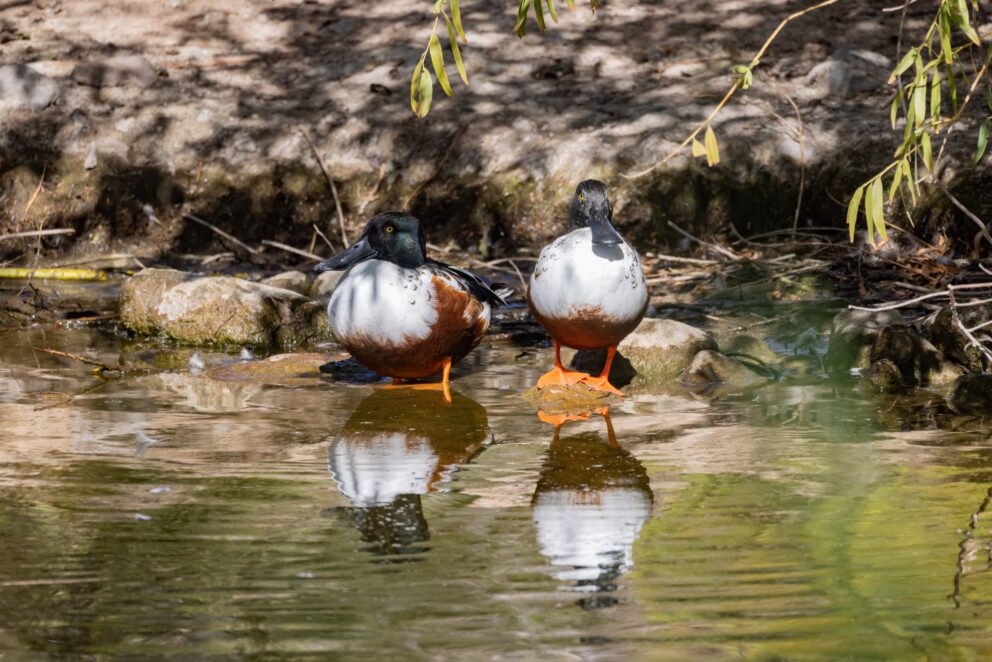- SCIENTIFIC NAME
- Spatula clypeata
- CLASSIFICATION
- Bird
- LIFE SPAN
- 5-10 Years
- SIZE
- 17-20” | 1.5-2lbs
- STATE CONSERVATION STATUS
-
- State Protected
- FEDERAL CONSERVATION STATUS
- Least Concern
- GAME STATUS
- Game
- GAME TYPE
- Waterfowl
- Washoe
- Humboldt
- Pershing
- Churchill
- Mineral
- Lyon
- Douglas
- Carson City
- Storey
- Elko
- Lander
- Eureka
- White Pine
- Esmeralda
- Nye
- Lincoln
- Clark
Habitat & Range
When breeding the Northern Shoveler prefers shallow wetland areas with lots of vegetation. When not in breeding season they will use many different types of standing water like lakes, wetlands, agricultural ponds, and wastewater ponds. In Nevada, these ducks can be found throughout the state and in the northern parts of Nevada they can be seen year-round.
- Agricultural Lands
- Lakes and reservoirs
- Marsh
Threats
- Drought
- Habitat Loss
- Water Diversion
Natural History
Female Northern Shovelers do most of the nest-building. Their nests are on land, but very close to water. Between nine and eleven eggs are laid, and the female incubates the eggs on her own. When the eggs hatch, ducklings can swim and follow their mom around for food.
The Northern shoveler’s distinctive beak helps it to sift through the water and forage for food. They are omnivores and use their beak to consume aquatic invertebrates, crustaceans, seeds, stems, and leaves. These are a dabbling duck meaning that they stay above water when feeding and do not regularly dive for their food. Unlike other dabbling ducks the Shoveler keeps its head above water when foraging and moves its beak back and forth on the top of the water to filter out anything they might want to eat.
Fun Facts














